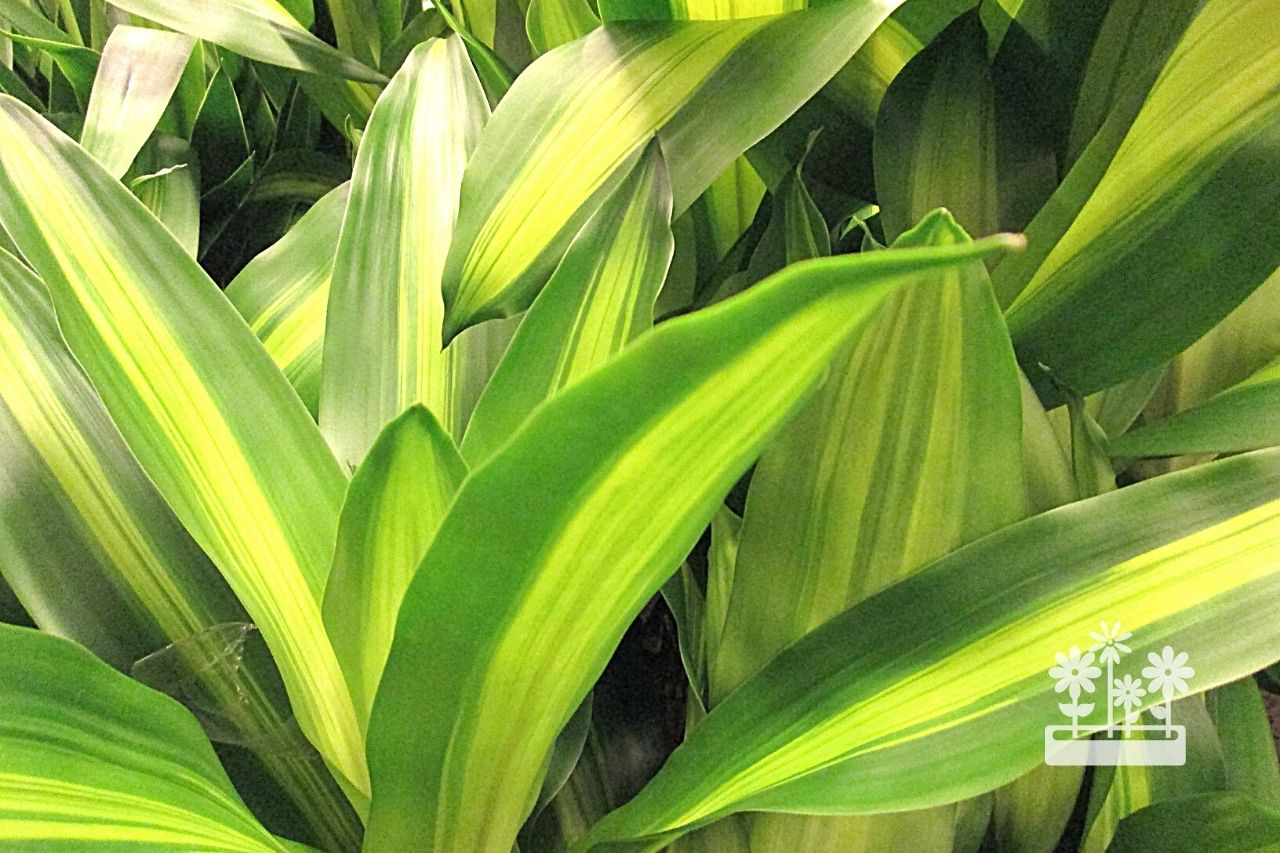The Dracaena fragrans, or corn plant, is a great starter plant for a budding plant owner. It’s generally easy-going and forgiving when faced with less-than-ideal circumstances. However, like any plant, they have basic needs and show symptoms when stressed. We’ll cover the primary care needs for Dracaena fragrans in this article so you can create the perfect environment.
Here’s how to care for dracaena corn plant.
What You'll Learn Today
How Much Sun Does a Corn Plant Need?

Fragrans is one of the lower light Dracaena species. Most dracaena plants merely survive in low light, but require more light to truly thrive.
Corn plants can acclimate to lower light levels than most other dracaenas. You will notice more vigorous growth if you give this plant more light. However, growth in low light conditions will be very slow, and the plant may not live as long.
Corn plants can withstand bright to moderate filtered light indoors. If you have a south-facing window, placing the plant a few feet away from the window and out of the sun’s rays should be sufficient.
You can also provide bright indirect light by putting a sheer curtain between the window and your plant. This setup mimics the filtered, dappled sunlight that corn plants receive in their native habitat.
Avoid putting your corn plant directly in front of an uncovered window or anywhere the sun’s rays might touch it. Direct sun is too harsh for these plants and can scorch the leaves, causing irreparable damage.
How Much Space Does a Corn Plant Need?
Dracaena fragrans can reach heights of up to 50 feet in their native tropical African climate. However, as a houseplant, you won’t need to accommodate that much space for them.
Indoors, corn plants typically grow up to five feet tall, and their leaves spread around two feet wide.
Since corn plants are toxic to pets like cats and dogs, you may want to consider putting the plant out of reach. If you need a plant stand or shelf for it, consider that while deciding how much space your dracaena will occupy.
How Often Do You Water a Corn Plant?
The amount of water you give your plant can vary based on many factors such as pot size, soil type, humidity levels, amount of sun, and geographic location. Therefore, it’s tricky to say exactly how often to water any houseplant.
A better way to determine when a corn plant needs to be watered is to feel the soil. Dracaenas like to stay relatively moist and only want to dry out about an inch below the surface before watering.
Use your finger or a bamboo skewer to poke the soil. If the stick or your finger is dry more than an inch into the pot, it’s time to water.
When you water a corn plant, water it thoroughly so that some water trickles out of the drainage hole in the pot. Let the plant sit and drain for about half an hour, then empty the drip tray/saucer so that the plant isn’t sitting in water.
For a complete overview on caring for Dracaenas and a visual guide, check out this YouTube video:
Dracaena Key Facts
| Botanical Name | Dracaena Fragrans |
| Common Names | Corn plant, striped dracaena, compact dracaena, constalk dracaena |
| Type of Plant | Shrub |
| Origin | Tropical Africa |
| Sun Requirements | Bright to moderate indirect light |
| Water Requirements | Soil should be moderately moist – water when dry more than an inch into the soil |
| Fertilizer Needs | All-purpose houseplant fertilizer for tropical plants during periods of active growth |
| Bloom Time | Flowers periodically throughout the year in their native habitat, but rarely flowers indoors |
| Common Pests | Spider mites and thrips |
As a rule, you should try to mimic the natural environment of your houseplants, and corn plants are no exception. Luckily, corn plants are tough and will be patient with you while you figure out how to meet their needs. Here is a summary of common issues you may experience though, and here’s our guide to occasional pruning.
Can I put my Corn plant in a North facing window?
Yes you can – these plants can tolerate lower lighting conditions – just be aware that growth may not be as strong and vigorous, and your plant may need to be moved into a brighter spot once in a while.